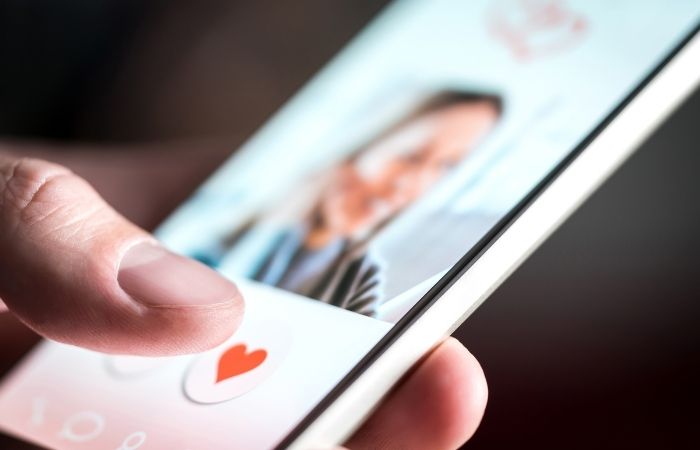How to Read Your At‑Home STD Test (And When to Trust the Result)
Quick Answer: Grindr’s success distributing over 1 million HIV self-test kits shows that when at-home testing is made convenient and stigma-free, more people, especially first-time testers, are willing to take control of their sexual health. If you want the same privacy and speed, ordering an at-home STD test kit is a powerful, judgment-free option.
From Headlines to Homes: Why This Story Matters
The recent milestone shared by Grindr and Together TakeMeHome proves that people want to test, they just don’t want the shame, the stairs, the forms, the waiting rooms. They want agency. The fact that 25% of those who ordered were first-time testers tells us something critical: the barrier wasn’t awareness, it was access and fear. HIV testing, like any other STD screen, doesn’t need to be traumatic or public. It can be as easy as tapping a button, waiting two days, and peeing in a cup. That’s where at-home kits come in, not just for HIV, but for chlamydia, gonorrhea, syphilis, and more.
In this article, we’re going to build on that story, taking the momentum of Grindr’s milestone and showing exactly how you can protect yourself with the same level of privacy and empowerment. We’ll break down what STD tests actually are, how different infections behave over time, what kind of test makes sense for you, and what happens if you test positive. Everything here is judgment-free, medically accurate, and built for real life. Let’s get into it.

People are also reading: The STD Diagnostics Boom: Why the Future of Testing Starts at Home
Who This Guide Is For (And Why It Matters)
If you’ve ever stared at a weird bump in the mirror and told yourself it was nothing, or Googled “how soon can you get tested after sex” at 2AM, this guide is for you. If you’re not out to your doctor, if you live hours from the nearest clinic, if you just hate being asked invasive questions at reception, this guide is especially for you. We meet people every day who delay testing because they’re afraid of being judged, outed, or misunderstood. That delay costs lives. But now, with test kits available at home, that delay can end today.
Testing is not a confession. It’s not an admission of guilt. It’s care. When you test, you’re protecting your future self, your partners, and your peace of mind. This guide will walk you through how at-home tests work, what kinds of infections they detect, when to test for each one, how to avoid inaccurate results, and what to do if you get a positive. You’ll leave knowing exactly what to order, when to use it, and how to talk to your partners, without shame, delay, or second-guessing.
What Actually Counts as an STD Test?
Let’s start with the basics: an STD test isn’t just one thing. It’s a family of diagnostic tools that vary based on what infection you’re screening for. For bacterial STDs like chlamydia and gonorrhea, the gold standard is a NAAT (nucleic acid amplification test), which looks for the actual genetic material of the bacteria. These are commonly done with urine samples or vaginal, throat, or rectal swabs. For viral infections like HIV, tests may look for antibodies, antigens, or viral RNA depending on how long it’s been since exposure.
There are three main ways to test: in a clinic, with a mail-in lab kit, or using an at-home rapid test. Clinic tests often offer the broadest range, including blood draws and full panels. Mail-in kits (like the ones used by Together TakeMeHome) involve collecting your own sample, mailing it to a certified lab, and checking results online. Rapid tests, on the other hand, give you a result in minutes without needing a lab. These are ideal when you want immediate feedback, but their accuracy may vary based on timing.
You can explore discreet at-home options, including both mail-in and rapid types, at STD Test Kits. Whether you’re checking for multiple infections or just need peace of mind after a single hookup, this combo test kit offers a no-questions-asked path to answers.
Window Periods: What to Know for Each STD
You can do everything right, order the right kit, swab carefully, mail it back fast, and still get a false negative if you test too early. That’s because every STD has a window period: the time between when you’re infected and when a test can reliably detect it. Testing during the window can give you false peace of mind. That’s why understanding timing matters as much as choosing the right test.
Figure 1. Each STD has its own testing timeline. This chart helps match symptoms or exposure to the best time to test. Always wait until accuracy peaks unless urgent care is needed.
Rapid Test vs Lab Test: Pros, Cons, and Tradeoffs
Picture this: you’re sitting in your car after a hookup that didn’t go as planned. You’ve got a rapid test in your glove compartment and ten minutes to kill before heading back inside. That’s the power of at-home rapid tests, they meet you where you are, physically and emotionally. But while they offer speed and privacy, they also come with trade-offs.
Rapid STD testing offers immediate results that take only minutes via finger prick or oral swabing. This works well after the window period or if someone just wants a status update. At-home lab packages, however, require the giving of a sample (urine or swab), the sample being sent out to a reputable lab, and results being received online a few days later. This type of test is more sensitive and works well if someone wants a medical-level test result right at home.
Clinics remain the gold standard of care in complicated cases, repeat testing after treatment, or if the symptoms persist. Here’s how the different options compare:
Figure 2. Choosing the right testing method depends on urgency, privacy needs, and where you are in the exposure timeline. There’s no one-size-fits-all answer, but there is a right fit for you.
When to Test After Exposure
If it’s been under five days since you had sex, chances are your anxiety is louder than your immune response. Most infections take time to show up on tests, even if symptoms begin early. Testing too soon can lead to false negatives, which means you might wrongly assume you’re in the clear. But if you’re dealing with concerning symptoms, fever, burning, unusual discharge, or lesions, test now and test again later.
Between day 7 and day 13 post-exposure, you’re entering the window where chlamydia, gonorrhea, and trichomoniasis may be detectable. Some rapid tests will show results, and lab tests are increasingly reliable. Still, a retest around day 21 or later adds confidence. After two weeks, you’re in peak testing territory: that’s when most infections can be caught accurately with either a lab kit or rapid test, depending on the infection.
Case in point: Daniel ordered a test five days after a high-risk hookup. It came back negative. But when a burning sensation started ten days later, he retested with a combo mail-in kit, and this time, he got a positive for gonorrhea. Because he caught it early, treatment was simple and fast. That retest might have saved him from unknowingly passing it on to someone else.
If you’re in the wait-and-worry zone, there’s no need to panic. Just plan. You can order a discreet, accurate combo STD test kit right now and have it ready when your window period opens. Don’t let fear stop you, peace of mind is just one test away.
Do You Need to Retest? Here’s How to Know
There’s no shame in checking twice. In fact, for many infections, a second test is not only smart, it’s medically advised. If you’ve started treatment for a positive result, it’s best to wait at least three to four weeks before retesting. That gives your body time to clear the infection and avoids false positives caused by lingering DNA fragments.
If you’ve tested negative but symptoms persist, or if you’ve had new exposures since your first test, plan a follow-up around 30 to 45 days post-risk. That second test can catch anything that was too early to detect the first time around. And if you’re living with a chronic infection like herpes or HIV, retesting isn’t always about confirmation, it’s about monitoring and making informed choices for yourself and your partners.
Case snapshot: Jamie tested negative for everything after ending a relationship. But six weeks later, a new partner mentioned an old diagnosis, and Jamie decided to test again. This time, their HIV test came back positive. Because they caught it early, they were able to start treatment immediately and prevent transmission to others.
You can retest easily and discreetly with our at-home kits. Start again at STD Test Kits, you’ll find both rapid and mail-in options that fit your needs, without judgment or hassle.

People are also reading: India’s Game-Changer: What a New HIV Prevention Shot Means for At-Home Testing
Privacy, Shipping, and Discreet Support
One of the biggest reasons people delay testing isn’t medical, it’s emotional. Nobody wants a neighbor, roommate, or delivery guy making assumptions based on what shows up in the mailbox. That’s why discreet shipping matters. All at-home STD kits from trusted providers arrive in plain, unmarked packaging. No branding, no awkward logos, no one has to know but you.
Shipping speed will depend on your location, but for many users, kits arrive within 2-4 business days. If you're planning around travel or need to test by a specific date-say, before starting PrEP or after a risky hookup-build in that window time. Some providers even offer expedited shipping or local pickup points to keep things private and efficient.
And when it comes to results, especially ones that might be hard to process, you deserve clarity without judgment. That’s where programs like Together TakeMeHome shine. They don’t just drop a kit and walk away. Many include access to telehealth services, result interpretation support, and even pathways for treatment referrals. You’re not alone, even if you never step into a clinic.
What If You Test Positive?
Take a breath. A positive test result can feel like a punch to the gut, even if you thought you were prepared. But it doesn’t mean you’re dirty, broken, or doomed. Most STDs, including chlamydia, gonorrhea, syphilis, and even HIV, are treatable or manageable with today’s medicine. The next step is not to panic. It’s to make a plan.
Confirmatory testing may be necessary depending on what kind of test you used and how long it’s been since exposure. That can mean either retesting with a different type of test (e.g., lab-based follow-up after a rapid result) or testing again after a few weeks. From there, treatment usually involves a round of antibiotics or starting antiretroviral therapy for viral infections like HIV. Partner notification, while scary, can also be done anonymously with tools like TellYourPartner.org or through your local health department.
Case example: After testing positive for syphilis, Elijah sat in his parked car for an hour, staring at the result. He thought about deleting the app he used. Thought about not telling anyone. But then he made two calls: one to a free STI clinic that could get him in the next day, and one to his last partner. That call didn’t end in blame, it ended in thanks. His partner tested, too. Both got treated. Both moved forward. That’s what real care looks like.
If you’ve just tested positive, or are scared you might, you don’t have to go it alone. You can start with our combo STD test kit, get clarity, and then choose what comes next with confidence and care. Your health is worth that next step.
FAQs
1. Is an at-home HIV test really accurate enough?
If you wait until the right time, yes. The same science used in clinics backs many of these kits. Think of it like baking, follow the timing and instructions, and the results are solid. Skip ahead too early, and you might get a half-baked answer. For best results, test at least 2–4 weeks after exposure, and consider a second test later if you're unsure.
2. What if I mess up the test at home?
You’re not the only one who’s ever fumbled a swab. That’s why most kits come with clear step-by-step instructions (some even have QR code video guides). And honestly, even if your hands are shaking a little, most tests are designed to be simple enough to get it right on your first try. But if something goes wrong, like you spill the sample or get a weird result, don’t panic. Just order another. It’s your health, and you're allowed a do-over.
3. I tested negative but still feel weird. Should I test again?
Trust your gut. Your body knows when something’s off. A negative test early on doesn’t mean you’re 100% in the clear, it just means nothing was detectable yet. If your symptoms stick around or your anxiety won’t quit, retest in a few weeks. Peace of mind is worth the follow-up.
4. What if I can’t remember when the risky encounter happened?
Then test now, and again later. Memory fog happens, especially when alcohol, apps, or emotions are involved. Start with what you do know (rough timeframe, any symptoms), and use the window period chart above as your guide. If in doubt, space tests a few weeks apart. It’s not about getting it perfect, it’s about being proactive.
5. Can I get a test without my partner knowing?
Absolutely. That’s the beauty of at-home testing. Kits ship in plain packaging, no labels, no giveaways. You collect the sample privately, view your results solo, and decide what happens next. Your body, your rules. Nobody gets to dictate your care, not even someone you share a bed with.
6. Does PrEP change how I test for HIV or other STDs?
Great question. PrEP is powerful against HIV, but it doesn’t block anything else. So if you're on PrEP (go you!), you should still test for chlamydia, gonorrhea, syphilis, and others every 3 months or so. At-home combo kits make this way less of a chore. You’re doing prevention right, just don’t forget the full panel.
7. Can I use these tests if I’m trans or nonbinary?
100% yes. Many test providers are finally catching up to the fact that not all bodies fit outdated forms. If you need rectal, throat, or vaginal swabs, look for kits that offer optional extras. And if anything about the language or process feels off, remember: your identity doesn’t invalidate your need for care. These tools are for you, too.
8. My test said positive. What do I even do now?
First, breathe. Seriously, don’t spiral. Most STDs are treatable, and you’re not the first person to get that result. Start by confirming your test type and timing. A rapid test? Follow up with a lab test. A mail-in lab result? Reach out to a clinic or telehealth service to start treatment. And when you’re ready, let your partner(s) know. You might be surprised how supportive people can be when you lead with honesty, not shame.
9. What if I don’t have symptoms? Should I still test?
Yes, yes, a thousand times yes. Some of the most common STDs, like chlamydia or HIV, can live in your body quietly for weeks, months, or longer. No itch, no burn, no clue. Testing isn’t just for when something feels off, it’s for when everything seems fine, too.
10. Can one test check for everything?
Not everything, but pretty close. Combo kits usually cover the big hitters: chlamydia, gonorrhea, syphilis, HIV, and sometimes trichomoniasis or hepatitis B/C. If you’re looking for a one-and-done tool, grab a combo pack. It’s the best all-in-one snapshot of your current status.
You Deserve Answers, Not Assumptions
The milestone Grindr just helped hit, over a million HIV tests delivered, proves that when people feel safe, they act. Testing doesn’t have to mean shame. It can mean power, protection, and progress. You don’t need permission to care for your health. You don’t need to justify your choices to anyone. You just need the right tools, delivered to your door, without judgment.
How We Sourced This Article: We combined current guidance from leading medical organizations with peer-reviewed research and lived-experience reporting to make this guide practical, compassionate, and accurate. In total, around fifteen references informed the writing; below, we’ve highlighted some of the most relevant and reader-friendly sources.
Sources
2. Grindr helps send out over 1 million HIV self‑test kits
4. Patterns of Lifetime and Recent HIV Testing Among Men Who Use Grindr (PMC)
5. Grindr users report more sexual risk, but more likely use PrEP | AIDSmap
6. Grindr Users Take More Sex Risks but Are More Open to PrEP | Clinical Infectious Diseases
About the Author
Dr. F. David, MD is a board-certified infectious disease specialist focused on STI prevention, diagnosis, and treatment. He blends clinical precision with a no-nonsense, sex-positive approach and is committed to expanding access for readers in both urban and off-grid settings.
Reviewed by: Jen Hecht, MPH | Last medically reviewed: November 2025
This article is for informational purposes and does not replace medical advice.






